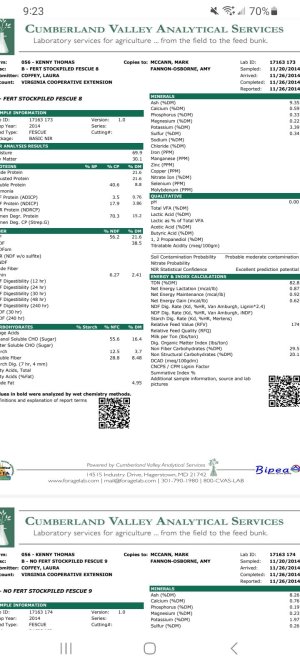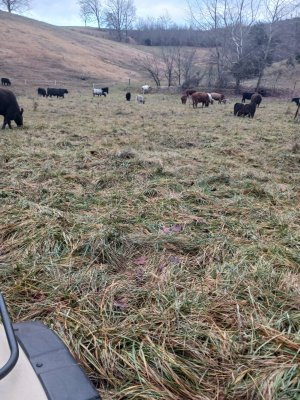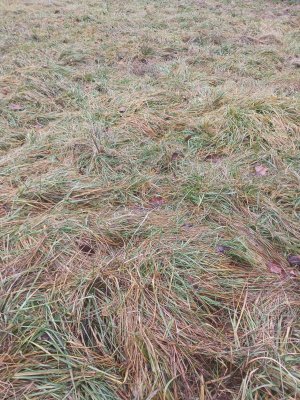kenny thomas
Well-known member
I definitely don't understand what you are getting at. Supplement 13.4% protein stockpile fescue with 10.2% hay to up the nutrition? Somehow that doesnt work in my mind.@kenny thomas, stay on top of this. What you are describing is more of a problem where you are in Ohio. However, I have seen producers starve their cattle with full rumens in Ohio, so it's not unheard of even in the east. If the added protein doesn't/didn't work, start a regiment of bale grazing combined with strip grazing, if at all possible. Not that you want to buy and feed hay. By this I mean get some higher nutrition hay bales, pre-place it in the stockpiled fields, and strip graze with the bales 'mixed in'. The better nutritional quality of the bales should raise the plane of nutrition for the animals to the point they won't be hungry or starve. Watch the Body Condition Score of the livestock closely this winter.
And anyone just sitting a roll of hay out in my fields will be ask to watch as i unroll it.
My cows are body condition 6 and 7 so where is the issue.
I posted this as an educational opportunity but guess i need educated. When dry cows need an 8% protein product and they have unlimited access to 13.4% grazing why would i need to watch my cows. I need educated.



